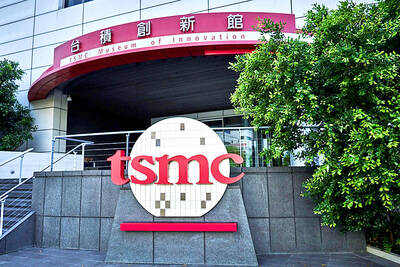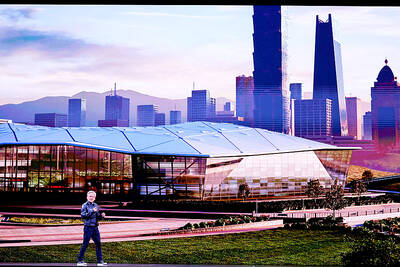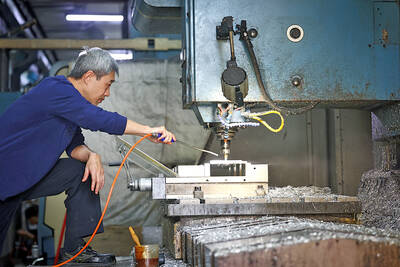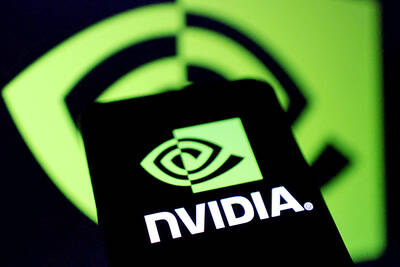The value of goods made by domestic contact lens makers in the first 10 months of last year jumped more than 30 percent year-on-year to hit an all-time high, Ministry of Economic Affairs data showed.
The contact lens industry had an output value of NT$16.7 billion (US$565.7 million) during the period, up 33.2 percent from the same period a year earlier and higher than the record of NT$16.1 billion set by the sector for the whole of 2016.
The surge in output value was the result of new product launches, such as lenses that are more breathable due to greater oxygen transmission capabilities, the ministry said.
Taiwanese manufacturers have also introduced cosmetic lenses with a wide range of colors in a bid to appeal to younger people, while some brands have unveiled products that cater to seniors, the ministry said.
The sector might have ended the year with an output value of more than NT$20 billion, which would obliterate the 2016 record, it added.
Contact lenses accounted for 59.7 percent of the eyewear industry’s total output during the 10-month period and reached NT$28 billion, an increase of 21.6 percent from the same period a year earlier, the ministry said.
A high percentage of manufacturers’ output continues to be exported, it added.
According to Customs Administration statistics, Taiwan exported about US$330 million worth of contact lenses in the first 11 months of last year, up 24 percent from a year earlier.
During the 11-month period, Japan was the largest buyer of Taiwan’s contact lenses, accounting for 65.8 percent of total exports, ahead of China (16.2 percent), the US (5.2 percent) and Hong Kong (3.5 percent).
The entire domestic eyewear sector is expected to report a new high of NT$30 billion in output from last year, up from NT$28.7 billion in 2016, the ministry said.

SEEKING CLARITY: Washington should not adopt measures that create uncertainties for ‘existing semiconductor investments,’ TSMC said referring to its US$165 billion in the US Taiwan Semiconductor Manufacturing Co (TSMC, 台積電) told the US that any future tariffs on Taiwanese semiconductors could reduce demand for chips and derail its pledge to increase its investment in Arizona. “New import restrictions could jeopardize current US leadership in the competitive technology industry and create uncertainties for many committed semiconductor capital projects in the US, including TSMC Arizona’s significant investment plan in Phoenix,” the chipmaker wrote in a letter to the US Department of Commerce. TSMC issued the warning in response to a solicitation for comments by the department on a possible tariff on semiconductor imports by US President Donald Trump’s

The government has launched a three-pronged strategy to attract local and international talent, aiming to position Taiwan as a new global hub following Nvidia Corp’s announcement that it has chosen Taipei as the site of its Taiwan headquarters. Nvidia cofounder and CEO Jensen Huang (黃仁勳) on Monday last week announced during his keynote speech at the Computex trade show in Taipei that the Nvidia Constellation, the company’s planned Taiwan headquarters, would be located in the Beitou-Shilin Technology Park (北投士林科技園區) in Taipei. Huang’s decision to establish a base in Taiwan is “primarily due to Taiwan’s talent pool and its strength in the semiconductor

Industrial production expanded 22.31 percent annually last month to 107.51, as increases in demand for high-performance computing (HPC) and artificial intelligence (AI) applications drove demand for locally-made chips and components. The manufacturing production index climbed 23.68 percent year-on-year to 108.37, marking the 14th consecutive month of increase, the Ministry of Economic Affairs said. In the first four months of this year, industrial and manufacturing production indices expanded 14.31 percent and 15.22 percent year-on-year, ministry data showed. The growth momentum is to extend into this month, with the manufacturing production index expected to rise between 11 percent and 15.1 percent annually, Department of Statistics

An earnings report from semiconductor giant and artificial intelligence (AI) bellwether Nvidia Corp takes center stage for Wall Street this week, as stocks hit a speed bump of worries over US federal deficits driving up Treasury yields. US equities pulled back last week after a torrid rally, as investors turned their attention to tax and spending legislation poised to swell the US government’s US$36 trillion in debt. Long-dated US Treasury yields rose amid the fiscal worries, with the 30-year yield topping 5 percent and hitting its highest level since late 2023. Stocks were dealt another blow on Friday when US President Donald